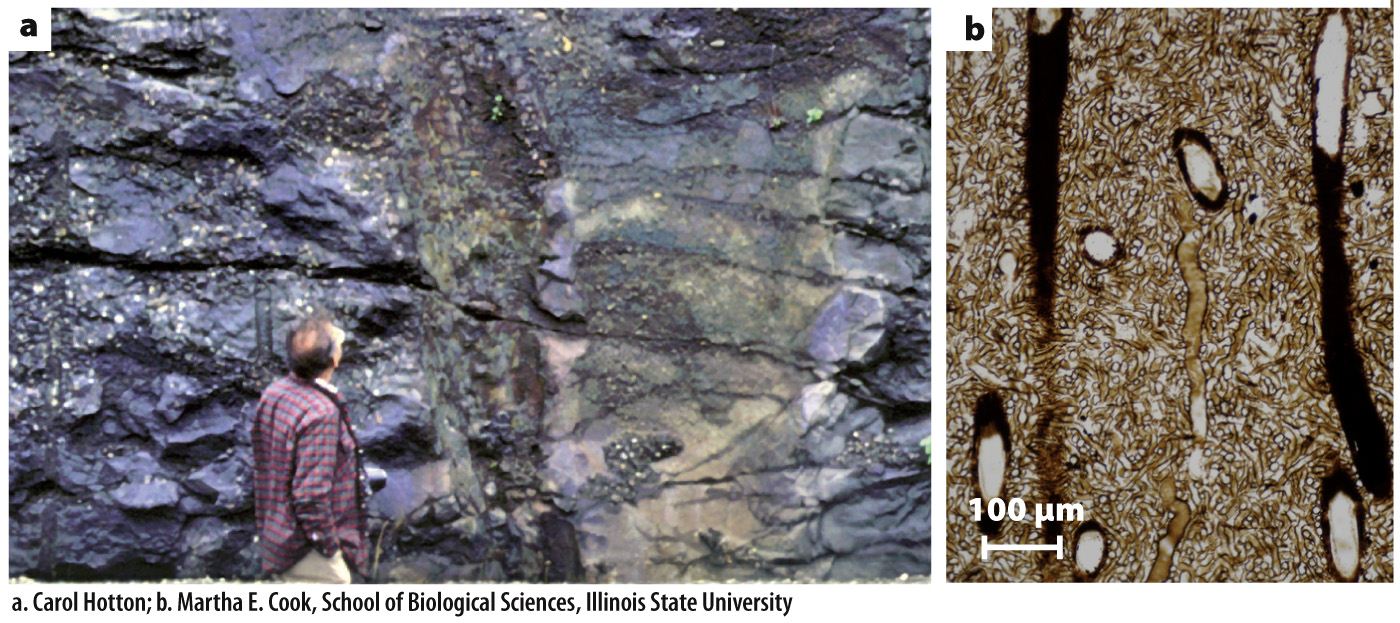Land plants evolved from green algae that could carry out photosynthesis on land.
Complex multicellular land plants originated about 465 million years ago, well after marine animals and algae. In some ways, however, the pattern of evolution of land plants parallels that of animals. Ancestral green algae evolved molecular means for cell–cell adhesion and communication between cells, and the algae that form the sister group to land plants share with them the innovation of plasmodesmata. Then, as they developed larger and more complex three-dimensional bodies, plant ancestors evolved a succession of genes and their protein products to guide cell division, expansion, and differentiation. Land plants, however, faced a different challenge from that of animals. The diversification of plants across the land surface requires that photosynthesis, evolved earlier by aquatic organisms, be carried out within tissues bathed by air. It also requires that nutrients and water be absorbed from the soil and transported throughout the plants rather than simply taken in by diffusion from the surrounding water.
Fossils indicate that by 400 million years ago, plants with specialized tissues for bulk flow of water and nutrients had begun to spread across the continents. As plant biomass built up on land, it created opportunities for additional types of complex multicellular organism. In particular, the fungi, which decompose organic matter, radiated by taking advantage of this resource (Fig. 28.15), evolving complex multicellularity in two distinct lineages (Chapter 34).

FIG. 28.15 Evolution of complex fungi. (a) This trunklike fossil, discovered in France, is actually a giant fungus that towered over early land plants 375 million years ago. (b) This image shows the interior of the fungus, which consists of tubes that transported nutrients through the large body.
Page 592
